Tractor Supply Company is a great place to get started with chickens. You can get your chicks, your chick starter, and all your supplies in one place. Here is a semi-quick introduction to the chicken you can get from TSC.
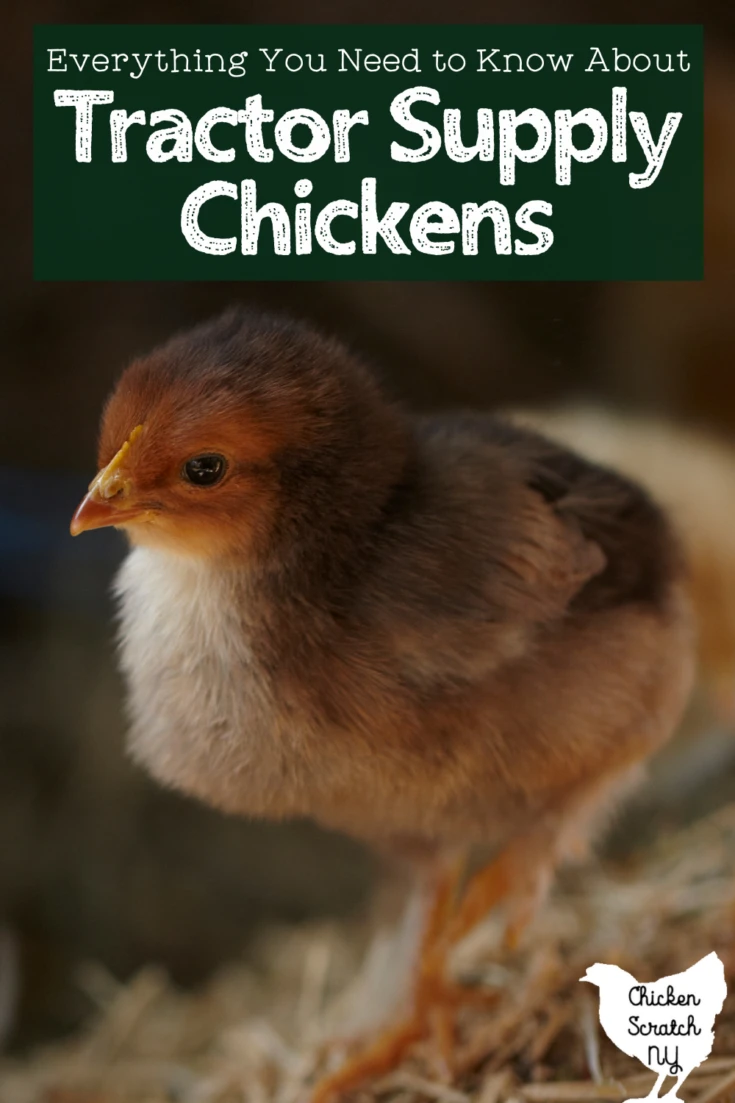
As easy as it is to impulsively pick up a six pack of chicks on a whim, you shouldn’t. If you want your chick raising to go as smoothly as possible you need to make sure your brooder is set up before you bring home the babies.
I recommend turning on your heat lights or plugging in your plate brooder several hours before you bring home your chicks just to make sure the temperatures are where they should be.
Read more about Setting Up a Brooder for Baby Chicks
Pros & Cons of Tractor Supply Chickens
There are pros and cons to starting with Tractor supply chicks but overall I think it’s a great place for beginners or anyone looking to start a flock without dealing with ordering through the mail.
Read more about Ordering Chickens Online
The Benefits of Tractor Supply Chicks
Tractor Supply receives their chicks in the mail from hatcheries, they don’t have a bunch of hens in the back cranking out babies! The biggest benefit to TSC chicks is the shipping process is already over.
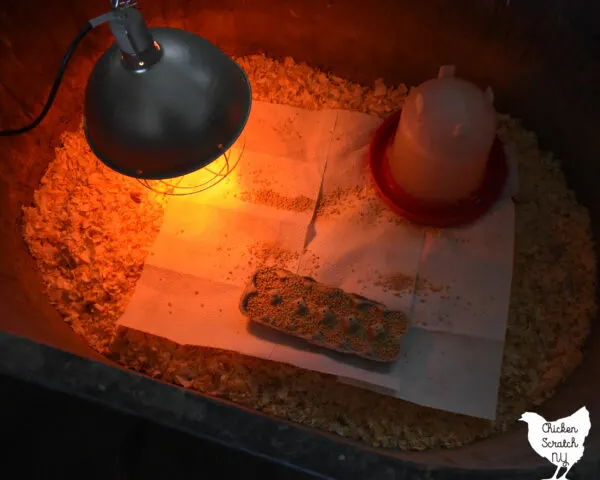
The chicks you’ll be getting are already settled in, eating and drinking. You can skip the paper towel under the feeder and the beak dipping that you need to do with mail-order chicks.
Another benefit is the immediate availability of chicks during Chicks Days. The shipping schedule is different for each store so you will need to either call the store or stop buy to find out when they get chicks in.
When I order my chicks I have to be on top of things, I usually place my orders in January or February to make sure I get what I want when I want it (April-May). Then I have to put the shipping date on my calendar and wait for my 7 AM Post Office phone call.
One final benefit is that it’s easier to get a small number of chicks. In NY you need to buy 6 at a time but if you’re looking or order chicks online you’ll either need to get 15+ or pay a hefty fee for shipping a small quantity.
The Downside to TSC Chicks
The major con of buying chicks at TSC is the limited options. If you’re just looking for a backyard flock to lay some eggs and you don’t really care about breed or variety that’s not going to be an issue.

If your looking for a lot of variety, you want a specific breed or you have your heart set on a rainbow of eggs you’re out of luck.
Bored with white eggs? Raise Chickens for a Colorful Eggs
The other con to getting your chicks at Tractor Supply is that you don’t always get what you think you’re getting. Either a labeling mix-up or someone putting birds back in the wrong tub can lead to unexpected results.
Read more about Identifying Chick Breeds
One final downside is you might miss out on the cute phase. I love chicks and chickens but they go from adorable fluff balls to awkward pretty quickly. In the end it doesn’t really matter but I thought I’d throw it in anyway.
Tractor Supply Chicken Breeds
My local TSC usually has 5-6 tubs set up, one with meat chickens, one with assorted bantams, one with ducks, and the others holding a rotating assortment of laying chicks.
Chances are good you won’t find all of these birds available at the same time but if you keep going back eventually you’ll see most of them.
Some chicks are sold as pullets while others are “straight run”. Pullets are vent sexed as hatchlings and should be all females, however it’s not 100%.
Straight run means you’re getting the chicks exactly as they hatch. Ideally, it’s a 50/50 split but it rarely works out that way. One year I got really lucky and my 10 straight run buff Orpingtons turned into 3 roosters and 7 hens, other years it’s the opposite.
While you can easily grab a box of chicks in store, it’s also possible to order chicks through Tractor Supply. You’ll have more options but you’ll need to buy more and if you’re looking for something special you’ll probably need to look at a stand alone hatchery.
Rhode Island Red
Rhode Island Reds are a heritage breed from, you guessed it, Rhode Island where they are the state bird.
They are the classic barnyard hen with their dark red coloring and single red combs. The hens have solid red coloring while the roosters have dark greenish iridescent tail feathers.
Rhode Island Reds are active birds and do well when allowed to forage and free-range. The medium-sized hens lay 200-280 large brown eggs per year.
All Rhode Island Reds are red but there is some variation in color based on the blood line. The production strains, bred with eggs in mind, tend to be lighter in color while show quality birds will have darker red feather and tend to lay fewer eggs.
Rhode Island Red chicks are a light reddish tan color with pale bellies and clean, pale legs.
The phrase “Clean Legs” has nothing to do with dirt or actual cleanliness, it just means the birds do not have feathers on their legs. Feather legged breeds like Brahmas, Cochina & Marans will have baby fluff on their legs
Read more about Feather Legged Chicken Breeds
Barred Rock
Another classic farm bird, Barred Rocks, or more accurately Barred Plymouth Rocks, are a sturdy clean legged breed with a barred pattern that looks like dark grey and white stripes.
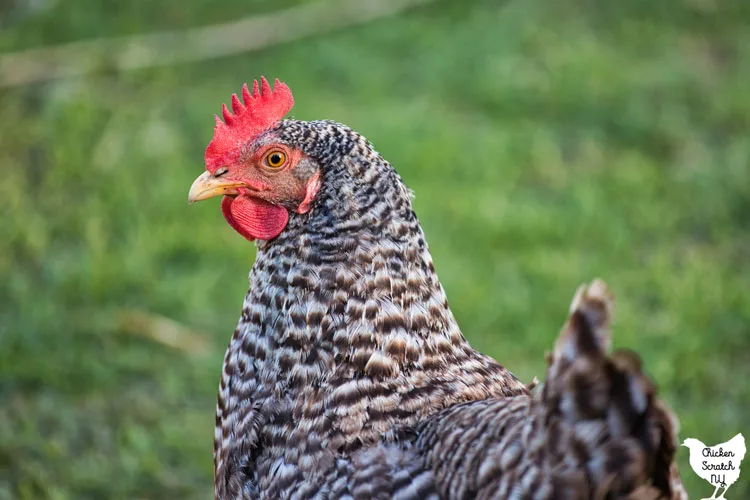
The barred pattern is very clean on Barred Rocks unlike in Cuckoo Marans where the lines have a blurry appearance. Another popular breed with the barred pattern is the Dominique, they are very similar to the rock with the exception of a small rose comb.
If you’re in love with the breed but not the barred pattern you can find them in other color patterns. Columbian Rocks (white with black around the head and tail), White Rocks (all white), and Partridge Rocks (brown with delicate penciling) are all available from other hatcheries.
The large hens weigh in around 7.5 pounds and lay 200-280 large brown eggs per year. They are known for going brooding and sitting on eggs.
Read more about Broody Hens
Barred rock chicks are dark grey with white bellies and clean white legs.
In theory, you can sex barred rock chicks by looking at the white spot on the top of their heads. Male chicks will have a larger spot that runs down to the neck and female chicks will have a smaller and more distinct white spot.
Black Australorp
Black Australorps are perfect for the goth farmer or anyone who loves a large fluffy bird. If you live in a really hot area you might want to pass on these guys, the solid black coloring makes them prone to over heating.

At first glance they might look pretty boring but when the sun hits you can see the green iridescence come to life. All Austalorps have a single comb, which is much larger on the roosters.
Australorps are medium sized chickens, the 6.5 pound hens lay 200-280 large brown eggs per year. They are gentle birds that prefer to roam and explore and have a reputation for going broody.
The black Australorp is by far the most common but there are two other recognized color variations. You can find both White and Blue Australorps.
Black Australorp chicks look like tiny fluffy penguins with a black back and white belly, they have clean legs without any feathers.
Buff Orpington
Buff Orpingtons are large fluffy and calm hens that make a great addition to the barnyard. Their large size makes them a great option for a dual purpose flock, where you can keep the hens for eggs and eat the extra roosters.
Read more about Dual Purpose Chickens
Orpingtons are large birds, the hens weight about 8 pound and the roosters can reach 10. Even though they’re large birds their calm and docile personality makes them a great choice for a small family flock.
Orpington hens are good layers, they can provide you with 200-280 medium brown eggs each. The fluffy hens are also known for going broody and being good moms.
The buff coloration is by far the most common, I’m sure a lot of people don’t even realize they come in other colors. While I admit I find the buff color a bit boring, the Jubilee coloration is stunning and if I were to get some that’s what I’d go with!
Jubilee Orpingtons have a pattern very similar to a Speckled Sussex, with a base of dark red and dark iridescent green-black spots topped with little white dots. You can also find Lavender Orpingtons which are a soft blue-grey color.
Both of these variations are much harder to find and the chicks are more expensive. If you’re looking to get your hands on a few make plans to place your order early!
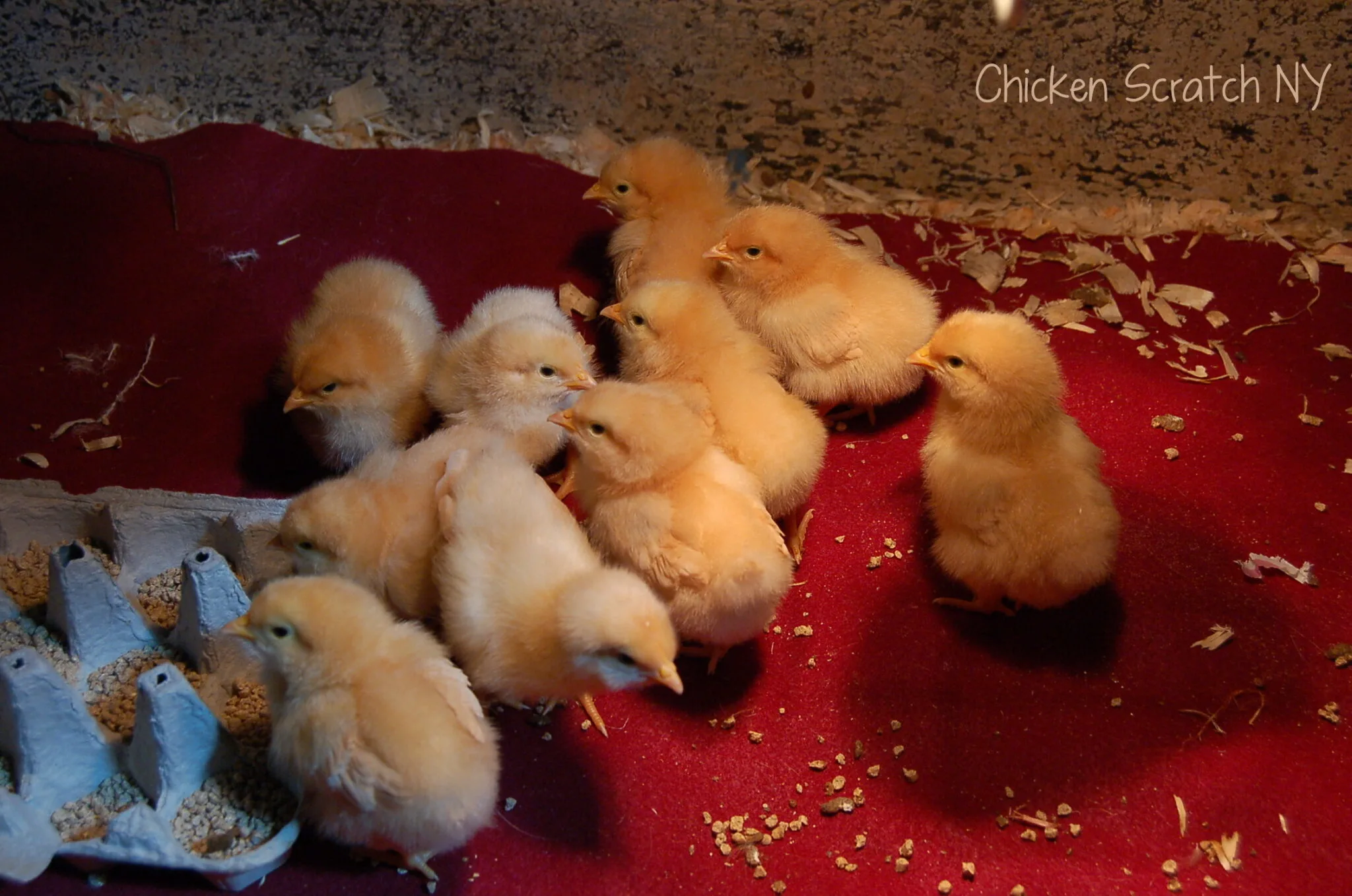
Buff Orpington chicks are a solid gold with a slightly lighter belly, they have clean yellow legs.
Silver Laced Wyandotte
Wyandottes are some of my favorite chickens, they’re a heritage breed with roots in New York state all the way back in the 1870s. These birds have thick bodies and small combs and they’re perfect for areas with cold winters.
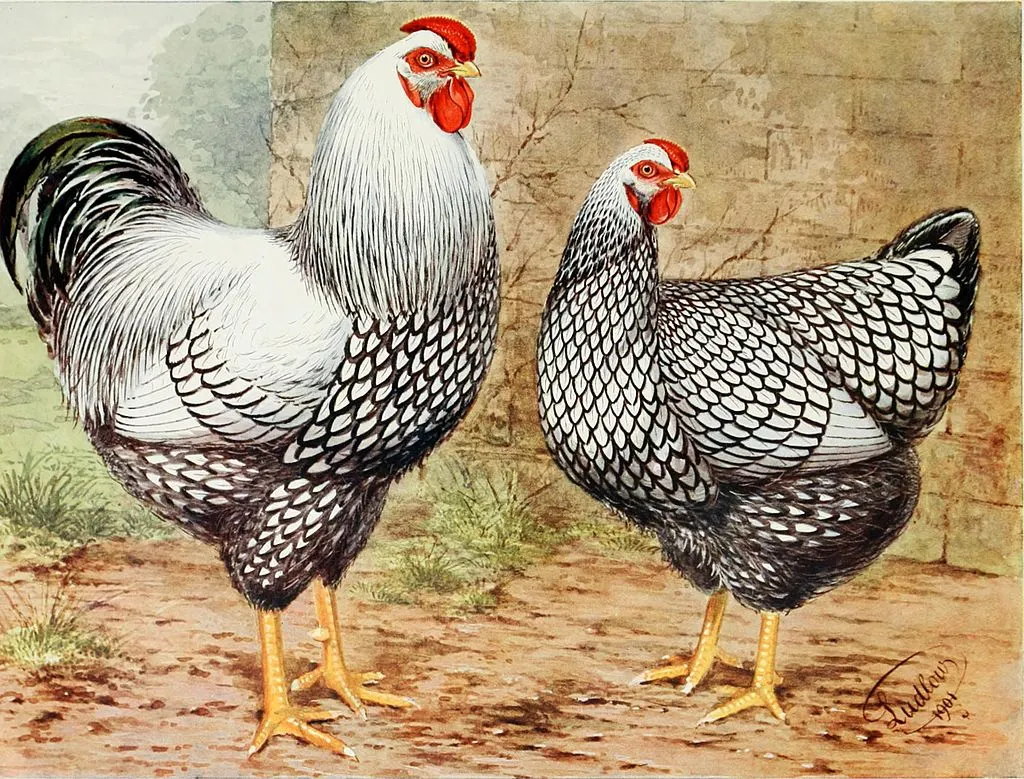
The silver-laced color pattern is quite common among different breeds, each feather is white with a thin band of black giving the feathers a laced appearance.
Wyandottes are a good dual purpose breed, the 6.5 pound hens lay 180-260 medium brown eggs a year. They’re a calm and docile breed that do well in a backyard setting.
You can also find Wyandottes in a gold laced (gold feathers with black edges), Blue Laced Red (red feathers with blue edging), Columbian, and others. You’ve got a lot of options when it comes to these guys!
Learn more about 3 Hardy Heritage Breeds Bred for Cold Weather
Silver laced wyandotte chicks have yellow/grey bellies with a grey/black chipmunk stripes down the back. The chicks also have clean, yellow legs.
White Leghorn
Another iconic farm breed and the only ones on this list that lay white eggs, we have the White Leghorns. These small birds have a very slight frame and lack the fluffy look of the other breeds I’ve mentioned.
Leghorns are a true egg-laying breed, the 4.5-pound hens pump out 220-300 large to very large white eggs per year and tend to not go broody. The Beautiful roosters top out at about 6 pounds, smaller than most of my hens!
The most common coloration is a solid white but there is a brown variation available. They have a very large single comb, my Leghorn girls have larger combs than most of my roosters.
I have a few Brown Leghorn hens and they’re very active birds, they spend a lot of time in the trees eating my mulberries.
White Leghorn chicks are solid pale yellow, almost white with clean orange legs.
Hybid Layers
Up to this point all of the chicken breeds I’ve profiled have been heritage breed chickens. These are chickens that are slow growing, can breed naturally, live long productive lives outdoors and are recognized by the American Poultry Association.
On the other side of that we have the hybrid layers. These are specific, intentional crosses that produce quick growing birds that lay early and prolifically.
There area a bunch of different breeds you might see that fit into this category including Sapphire Gems, Golden Comets and ISA Browns. The main benefit to these birds is that they lay early and often.
The downside is they burn out and die young. Many years ago I had a handful of hybrid layers (I think they were Tetra Tints but it’s been almost a decade!) 2 ended up with ascites, or water belly, which I’ve never seen in any other birds.
There is a lot of variation in the hybrid breed and a lot of variation in the appearance of the chicks. One fun fact is a lot of hybrids are sex-linked, the male and female chicks look different so you can accurately sex them without relying on vent sexing.
Learn more about Hybrid Layers & Sexlink Chickens
Assorted Bantams
Every time I head to TSC for chick starter I have to sneak a glance into the chick tubs. I always look in the Bantam tub and it’s almost always one of two breeds.
Read more about Bantam Chickens
The most common chicks in the assorted bantam tub are Silkies. They’re a really popular option for backyard chickens thanks to their calm and docile personalities, small size and soft, fur-like feathers.
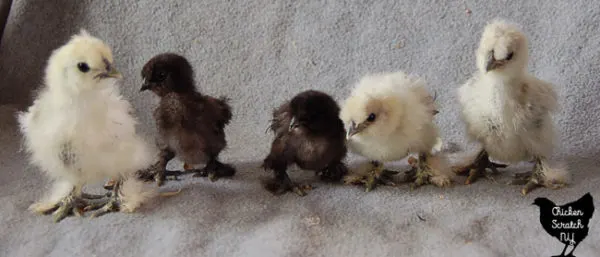
Silkie chicks are really easy to pick out of a crowd, they have black skin and black feet with feathering and extra toes. Even if you’ve never seen a Silkie you can pick them out based on that description alone!
Read All About Silkies
Silkies come in several colors, I’ve seen white, buff or tan and black Silkies at my local TSC. No matter what color the feathers are, they’ll still have that dark skin.
They aren’t prolific layers but they do serve a purpose other than pet and lawn ornament. Silkies are known for being on of the most broody hen breeds, my Grandfather used to tell me they’d sit on rocks if they couldn’t find eggs to hatch!
Read more about Keeping Chickens as Pets
Another common type of chick you’ll see in the assorted bantams bin is gold and silver Sebrights. These guys are more active than the silkies but like all bantams, they stay small.
They’re an ornamental breed but they do lay the occasional small white egg. Unlike Silkies they are not known for going broody.
Seabright chicks have clean legs and either greyish black or chipmunk brown coloring with dark heads.
Adult Seabrights have a very upright stance that’s unusual in the common backyard chicken breeds and the roosters are “hen feathered” meaning they lack the saddle feathers that almost all roosters have.
Read more about How to Tell Roosters from Hens
The final breed I’ve heard of being in the tub, but I’ve never seen it myself, are Mille Fleur d’Uccles. They are tiny and beautiful with heavily feathered feet and a stunning dotted feather pattern.
If I had seen them in stores, I’d have at least a half dozen! Unlike most breeds, the hens are actually more beautiful than the flashy roosters. The lack of saddle and hackle feathers leaves more room for the pretty double polka dots.
They lay small cream colored eggs and weigh less than 1.5 pounds. Their eggs have a low fertility but the hens are known for being good setters.
Mille Fleur d’Uccle chicks are small with tan and light brown fluff, feathered legs and little cheek poofs that will later turn into their beards.
Cornish Cross Meat Chickens
If you’re looking to dip your toe into the world of raising meat birds, I think TSC is the way to go. You don’t have to buy a lot of them and if you’re lucky you might even get to snap up some older (~1 week) birds for a big discount.
Cornish Cross chicks are stocky with pale yellow fluff that turns to white feathers and thick legs. They grow much faster than egg or heritage breeds and should be kept on their own.
Tractor Supply Ducks
When it comes to getting baby birds at Tractor Supply you aren’t limited to chickens! TSC has several tubs set up for birds, most are filled with chicks but there is almost always one tub with ducklings.
The most common duck you’ll see is the Pekin duck. They’re a large, all white farm duck that can be used for both meat and eggs.
The white feathers and a quick growth rate make them a popular choice for the table. If you plan to eat them you are only looking at 7-8 weeks before you butcher them.
Peking ducks are decent layers, pumping out 200-300 white eggs a year. They aren’t known for going broody so plan to either incubate your eggs or stick them under a broody hen.
Pekin ducklings are pale yellow with yellow feet.
Unlike the chicken breeds the duck selection seems to be a little more random. I’ve seen Indian Runners (they look like bowling pins with anxiety and you’ll never convince me otherwise), Khaki Campbell, Swedish and white crested ducks.
Indian Runners come in a variety of colors but they’re easy to pick out based on their very upright posture. Khaki Campbell duckling are a dark olive greeny brown with dark feet.
Black and Blue Swedish ducklings have dark backs with a yellow patch on the chest that will become the white bib on the adults. Crested ducks will have a small pouf of fluff on their heads.
Tractor Supply Turkeys
I’ve occasional seen turkeys at Tractor Supply but not consistently enough to count on it. If you really want turkeys plan to order them either through the store or from a hatchery.

The only turkeys I’ve ever seen are Broad Breasted Whites, the standard meat turkey that’s been bred to grow quickly with a lot of breast meat.
Read more about Raising Turkeys
Broad Breasted White turkey poults are pale yellow with light-colored legs. They look a bit like gangly chicks but they will have a small pimple-like dot right at the top of their beaks.
Read more about Raising Turkey Poults (aka baby turkeys)
Looking for more info? Check out my Chicken Keeping page or start here:

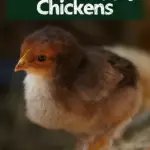
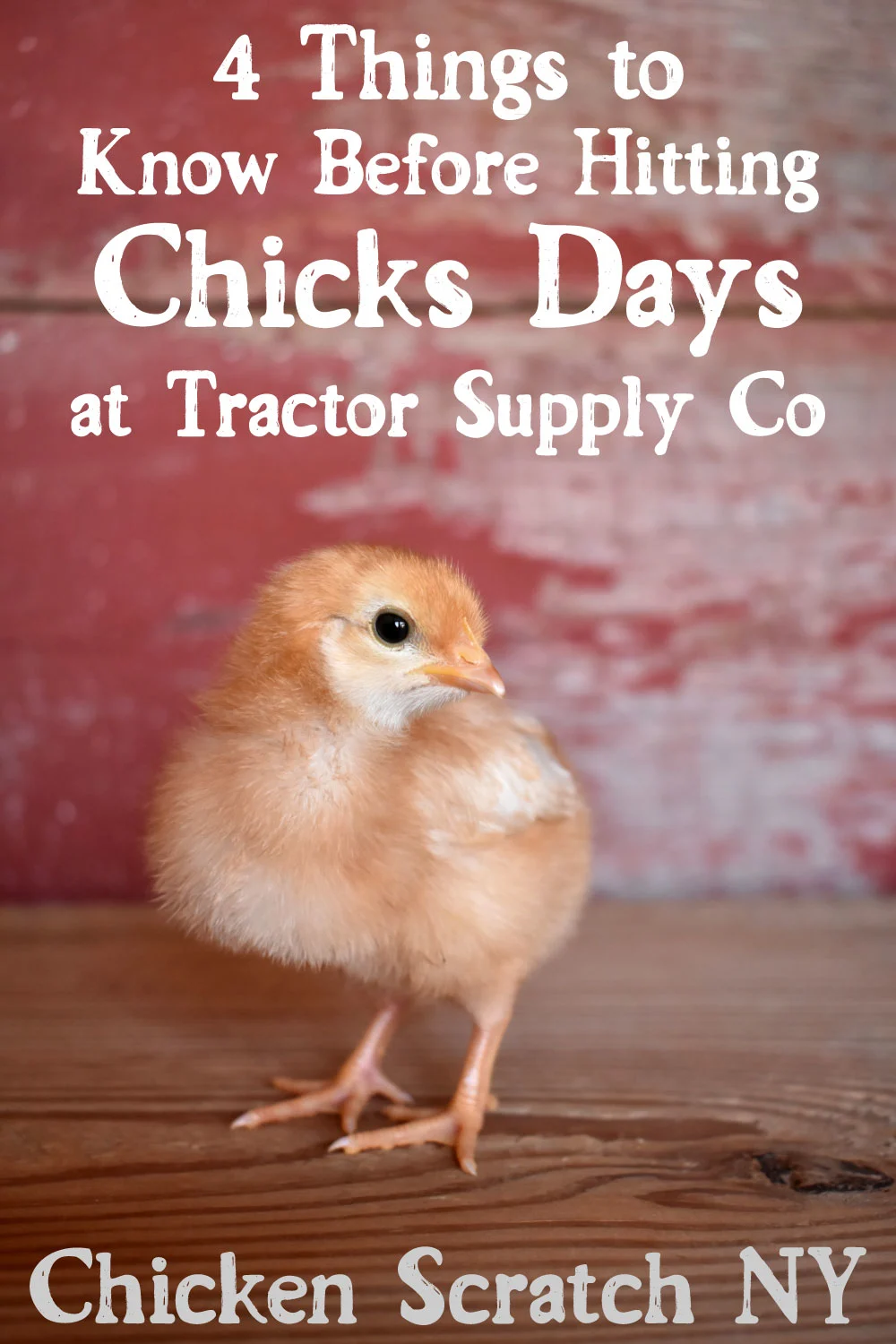

Nina
Monday 22nd of April 2024
Thank u so much for helping navigate TSC birds. I’m still a beginner but I couldn’t believe they had Plymouth Rocks 1$ each. All I want are eggs. I understand 20 weeks is the Magic number. Thanks again
Reggie
Wednesday 17th of January 2024
When can I find Black Australorp chicks at a specific local Tractor Supply Store?
Alecia
Thursday 18th of January 2024
You'll have to call the local stores to find that out
Kristin
Thursday 21st of September 2023
When do you start getting most of your chicks in to sell? And what breeds do you mostly carry? Thank you
Alecia
Friday 29th of September 2023
I do not sell chickens, I just write about them. Tractor Supply Co usually gets chicks in in the early spring and carries them through the summer
McKennah
Friday 30th of June 2023
Do u have any for sale ducklings
Alecia
Monday 3rd of July 2023
I don't sell birds
McKennah
Friday 30th of June 2023
I’ve always dreamed of having a ducklings sleep next to me!
Alecia
Monday 3rd of July 2023
It's fun for a quick nap if you don't mind the risk of a little duckling poo!